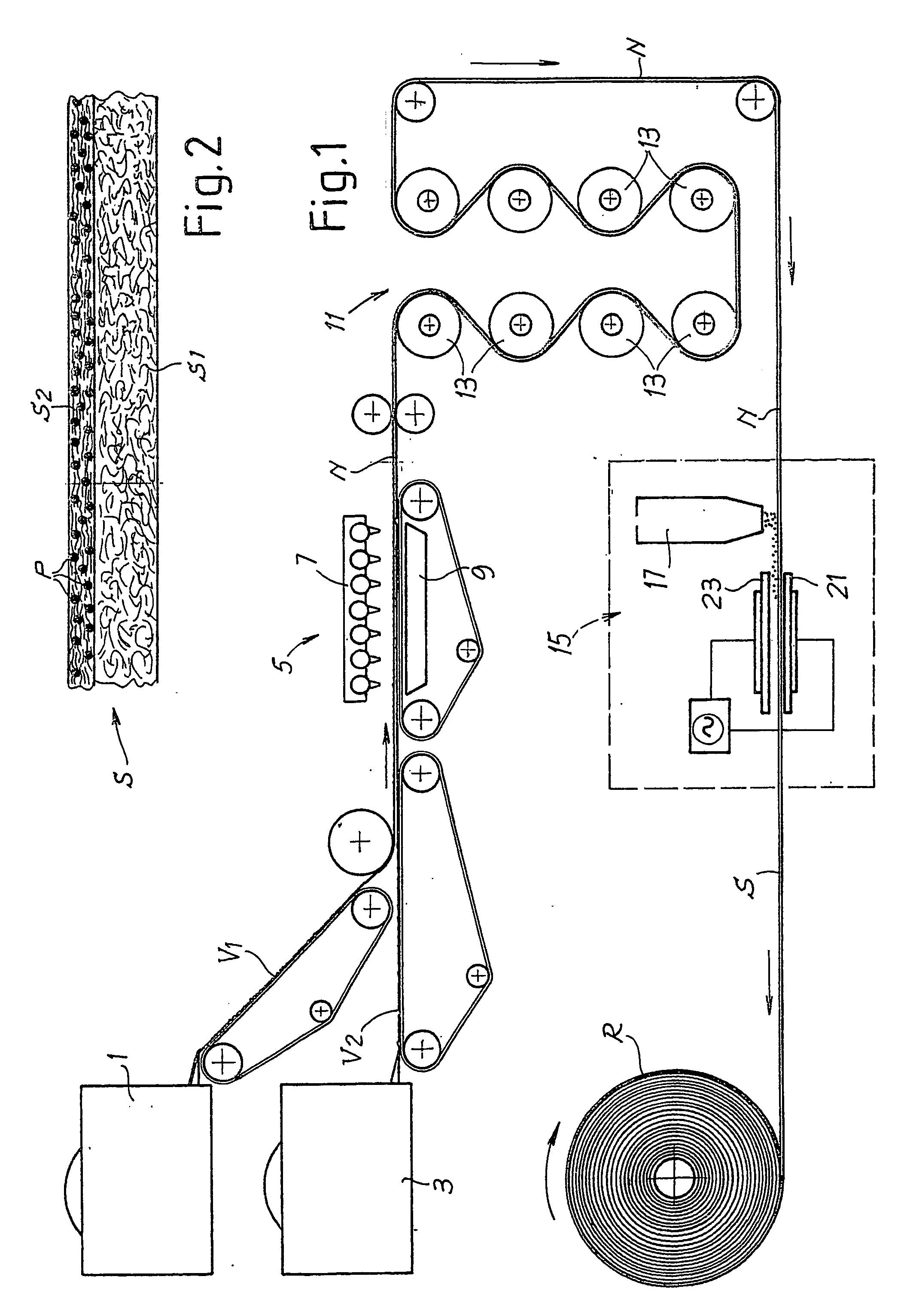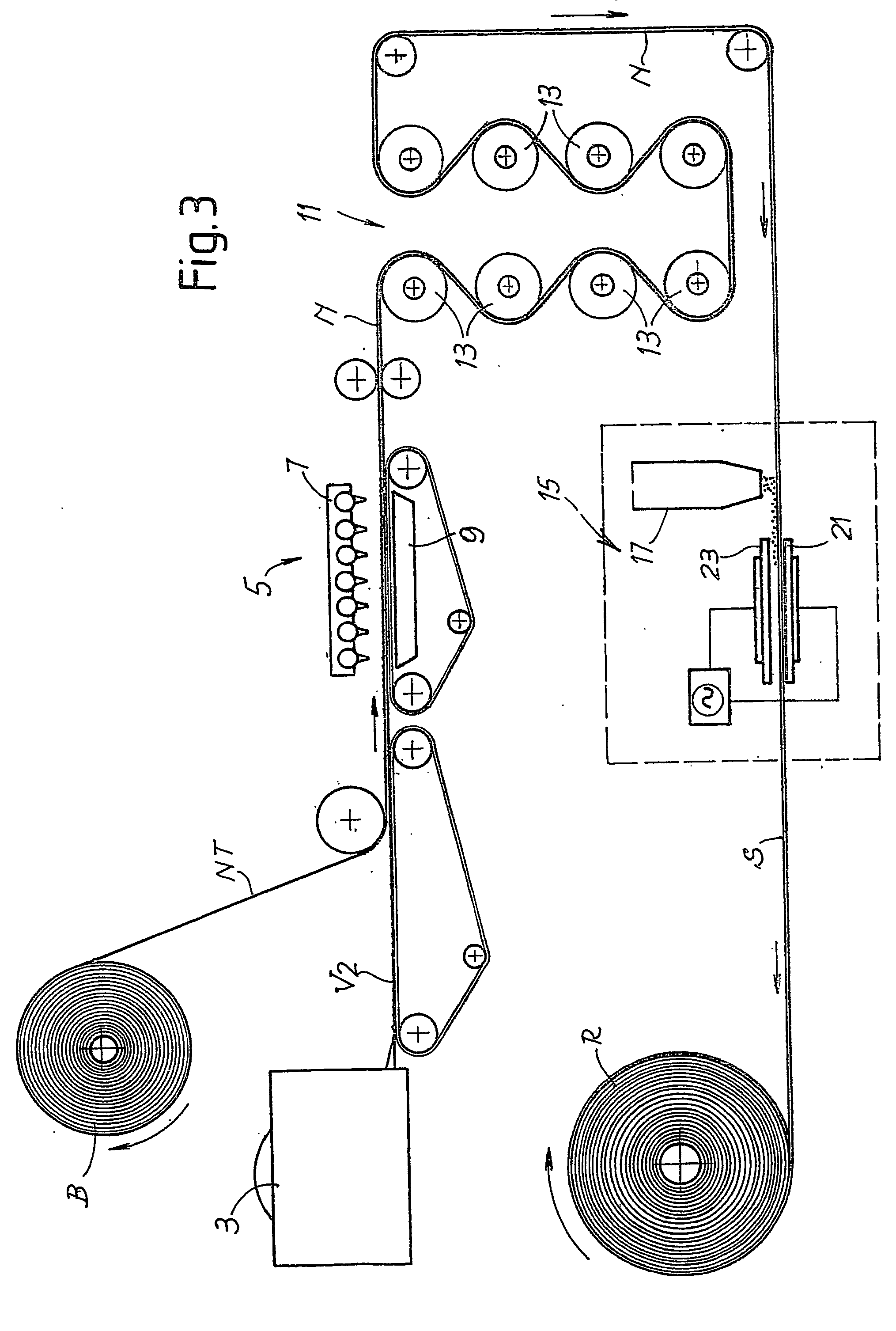Composite absorbent structure for the production of diapers, sanitary napkins and associated production method
a technology of absorbent structure and diaper, which is applied in the direction of body discharge device, application, coating, etc., can solve the problems of high cost of machinery, complex plant necessary for this type of production, and need for binders, so as to reduce the overall volume of finished products, reduce the density of acquisition and distribution layer, and reduce the overall volume
- Summary
- Abstract
- Description
- Claims
- Application Information
AI Technical Summary
Benefits of technology
Problems solved by technology
Method used
Image
Examples
Embodiment Construction
[0058]FIG. 1 shows schematically a first embodiment of a production line for producing a structure according to the invention. 1 and 3 denote generally two carding machines or other textile machines able to produce a web of unconsolidated, i.e. non-bonded fibers. Instead of a carding machine, a forming system of the aerodynamic type, a random carding machine, or so-called rando webber, a so-called cross-lapper or other suitable machine may be used.
[0059] The expression “web of unconsolidated or non-bonded fibers” is understood as meaning a (single or multiple) web of fibers formed by fibers, bonding of which is generally due exclusively to the intrinsic adhesive power of each individual fiber, without the addition of binders and / or the provision of a bonding treatment. A web of fibers differs, in this sense, from a nonwoven fabric. “Nonwoven fabric” is understood as meaning (according to DIN 61210) a flexible textile product obtained by means of bonding of webs of fibers. The bondi...
PUM
| Property | Measurement | Unit |
|---|---|---|
| Length | aaaaa | aaaaa |
| Length | aaaaa | aaaaa |
| Fraction | aaaaa | aaaaa |
Abstract
Description
Claims
Application Information
 Login to View More
Login to View More - R&D
- Intellectual Property
- Life Sciences
- Materials
- Tech Scout
- Unparalleled Data Quality
- Higher Quality Content
- 60% Fewer Hallucinations
Browse by: Latest US Patents, China's latest patents, Technical Efficacy Thesaurus, Application Domain, Technology Topic, Popular Technical Reports.
© 2025 PatSnap. All rights reserved.Legal|Privacy policy|Modern Slavery Act Transparency Statement|Sitemap|About US| Contact US: help@patsnap.com



